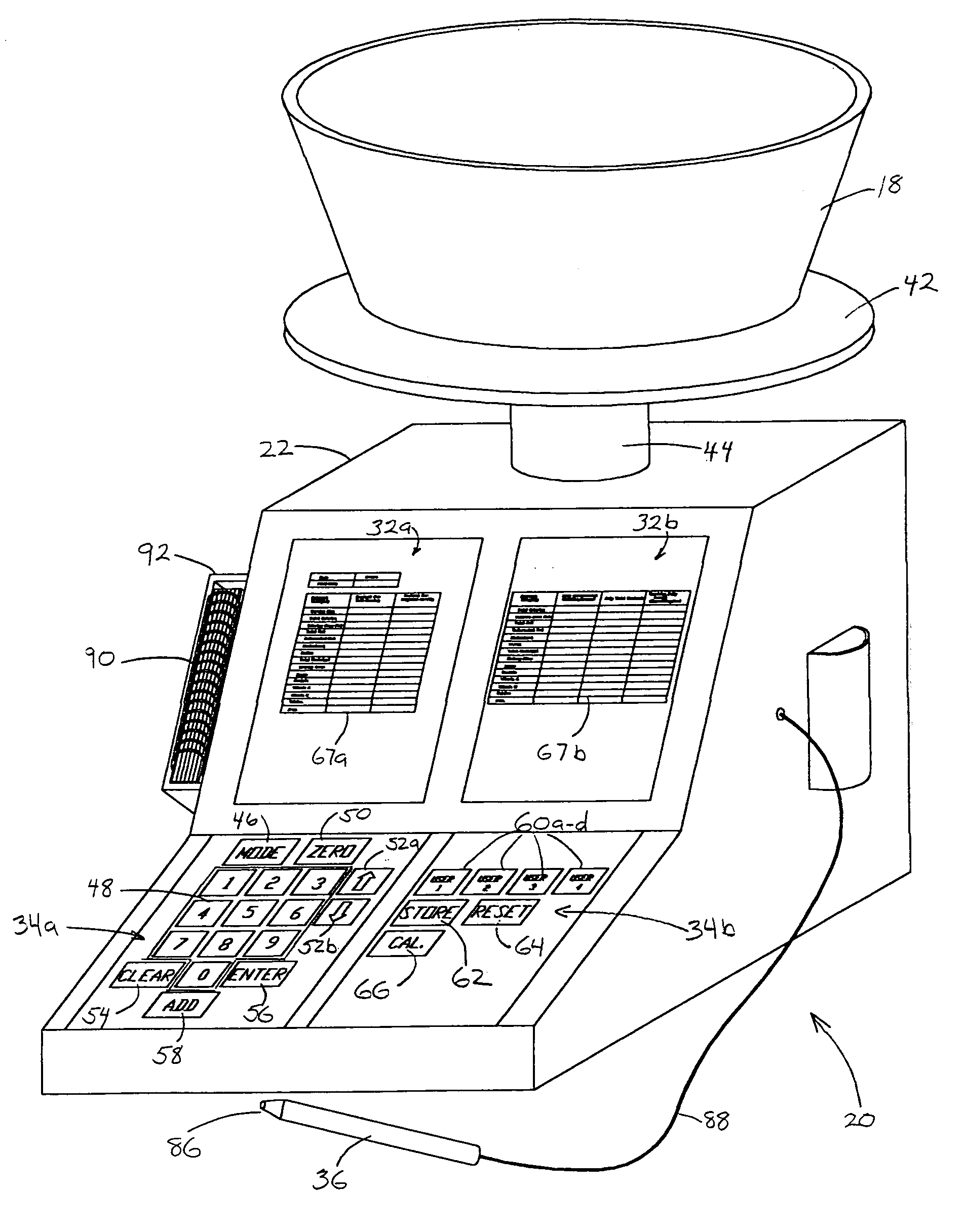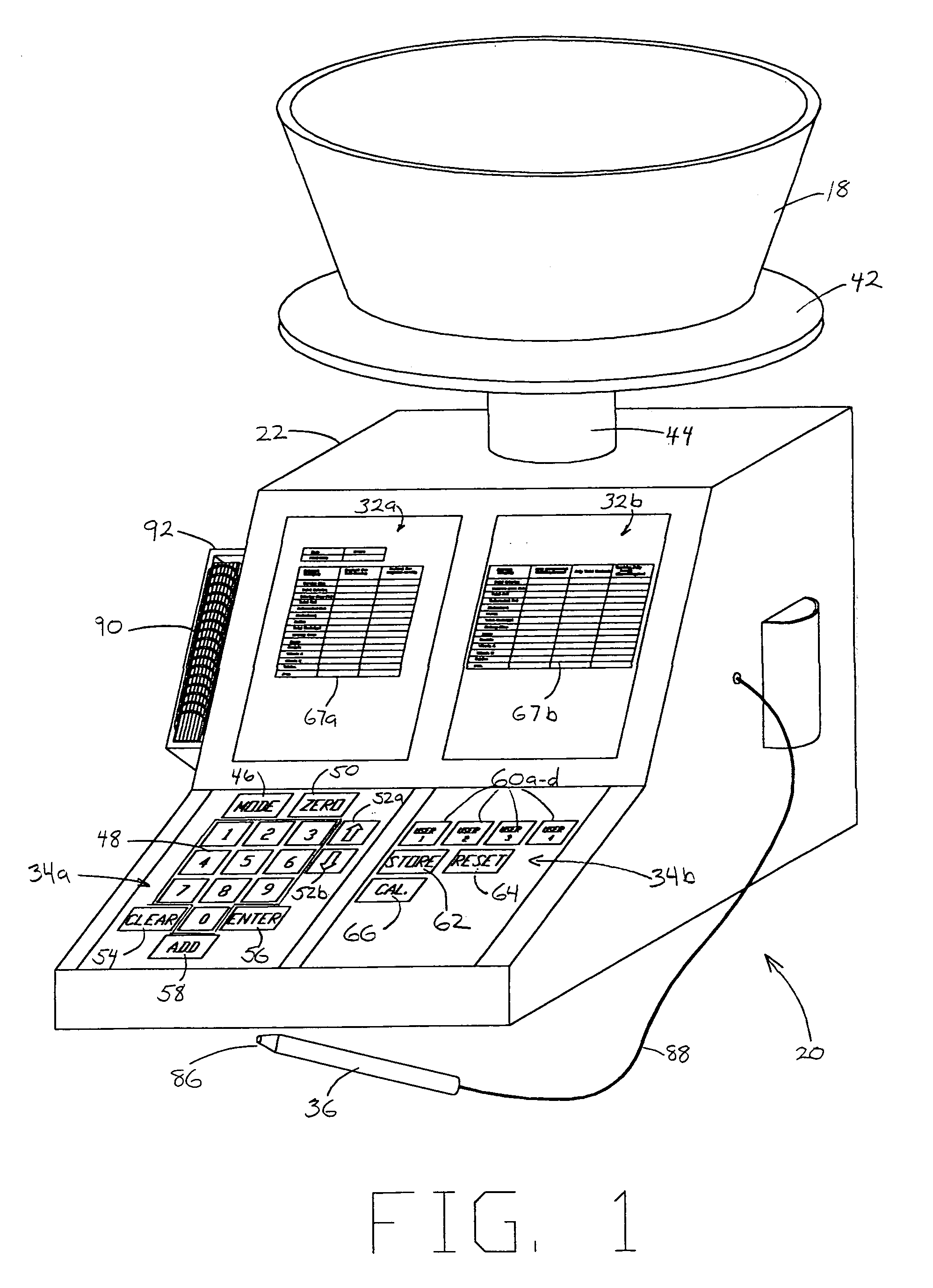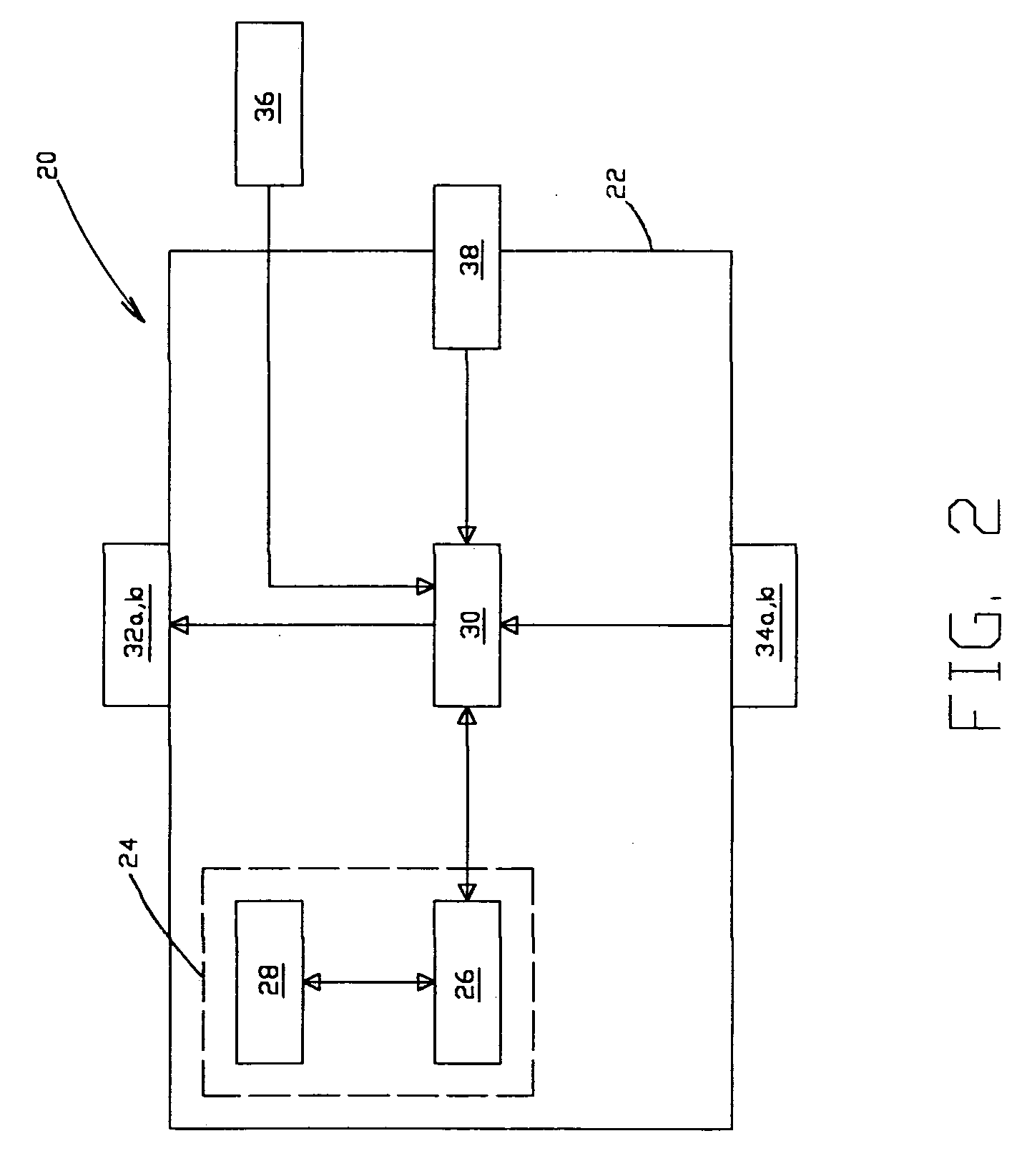Computerized dietetic scale
a dietetic scale and computer technology, applied in the field of dietetic measurement apparatus, can solve the problems of increasing the risk of certain chronic diseases, affecting the accuracy of dietetic results, and reducing so as to improve the accuracy of dietetic results, and facilitate the use. the effect of convenien
- Summary
- Abstract
- Description
- Claims
- Application Information
AI Technical Summary
Benefits of technology
Problems solved by technology
Method used
Image
Examples
Embodiment Construction
[0038]Referring to FIGS. 1–2, a preferred embodiment of a dietetic scale 20 in accordance with the present invention is shown. The scale includes external casing 22 which houses means for the computation, retrieval and storage of nutrition data and instructional command sequences in the form of a computer 24, the computer being integrated in the form of a microprocessor chip, and comprising a central processing unit (CPU) 26, and memory means 28 comprising read only memory (ROM) and random access memory (RAM). An input / output (I / O) means 30 is connected to the CPU 26 and is configured to send data from the CPU to the display means 32a, b and accept requests and data from the input means keypad 34a, b, bar code reader wand 36, and weighing means 38. In some embodiments a single controller may be used, while in other embodiments multiple or segmented controllers may by employed, depending on economies and other design factors.
[0039]The scale 20 further comprises a weighing means 38 co...
PUM
 Login to View More
Login to View More Abstract
Description
Claims
Application Information
 Login to View More
Login to View More - R&D
- Intellectual Property
- Life Sciences
- Materials
- Tech Scout
- Unparalleled Data Quality
- Higher Quality Content
- 60% Fewer Hallucinations
Browse by: Latest US Patents, China's latest patents, Technical Efficacy Thesaurus, Application Domain, Technology Topic, Popular Technical Reports.
© 2025 PatSnap. All rights reserved.Legal|Privacy policy|Modern Slavery Act Transparency Statement|Sitemap|About US| Contact US: help@patsnap.com



